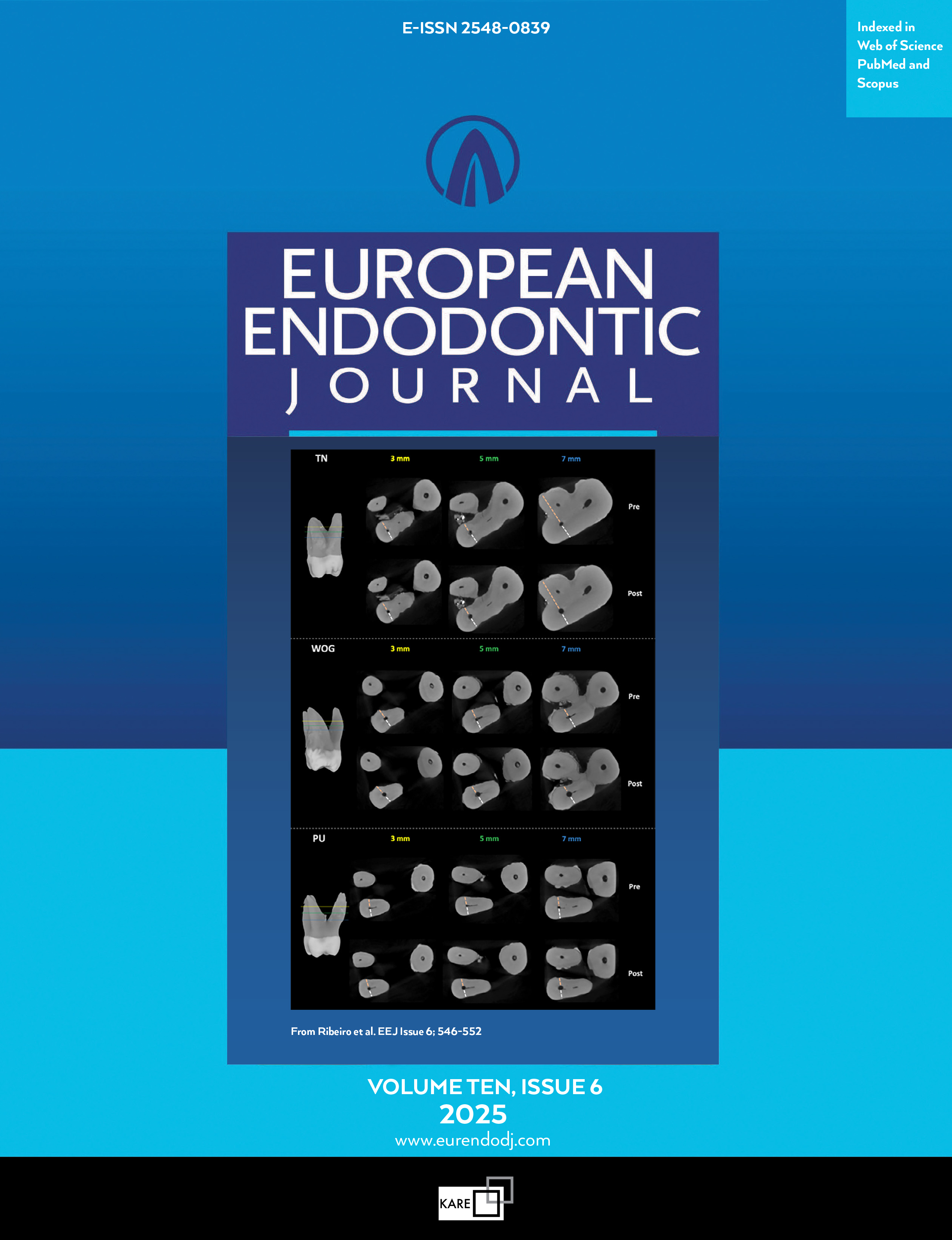Metrics
2024 IMPACT FACTOR
5 year Impact Factor
Eigenfactor Score
2024 CiteScore
Journal Citation Reports
(Clarivate 2025, JIF Rank)
Artificial Intelligence in The Diagnosis, Treatment, and Prognostication in Endodontics: A Comprehensive Literature Review
Keina Kun, Nathaly Adriana Gonzalez, Gianella MallaDepartment of Endodontics, University of Cuenca, Faculty of Dentistry, EcuadorThe objective of this article is to conduct a comprehensive review of the applications of artificial intelligence (AI) in endodontics, focusing on optimizing diagnosis, supporting clinical decision-making, and predicting treatment outcome. Additionally, its limitations and areas for improvement are analysed. Information was gathered through a search in scientific databases such as PubMed, Scopus, ScienceDirect, and Google Scholar, selecting studies published in English between 2016 and 2025. After applying exclusion criteria and removing duplicates, 51 articles were included. The main applications of AI in endodontics are grouped into three areas. In Diagnosis, AI models based on convolutional neural networks (CNNs), such as Diagnocat, have demonstrated accuracy greater than 90% in detecting periapical lesions using radiographs and cone-beam computed tomography (CBCT). Likewise, AI algorithms have successfully identified vertical root fractures with high precision in CBCT images. In the analysis of root and canal morphology, deep learning models have shown high accuracy in detecting C-shaped root canals and other anatomical variations. Regarding treatment, deep learning models can predict case complexity and improve treatment planning. Additionally, neural network-based algorithms have outperformed traditional electronic apex locators in determining root canal length. In terms of prognosis, AI models have achieved 95.6% accuracy in predicting pain after root canal treatment (RCT). AI also aids in predicting the success of non-surgical endodontic retreatments. This study demonstrates how AI is revolutionising endodontics by improving diagnostic accuracy, treatment planning, and outcome prediction. However, it faces limitations such as the need for large datasets, high costs, and lack of self-development. Future studies should address these challenges to enhance its integration into clinical practice. (EEJ-2025-05-072)
Keywords: Artificial intelligence, convolutional neural networks, diagnosis and therapeutic, endodontics
Manuscript Language: English
(397 downloaded)



